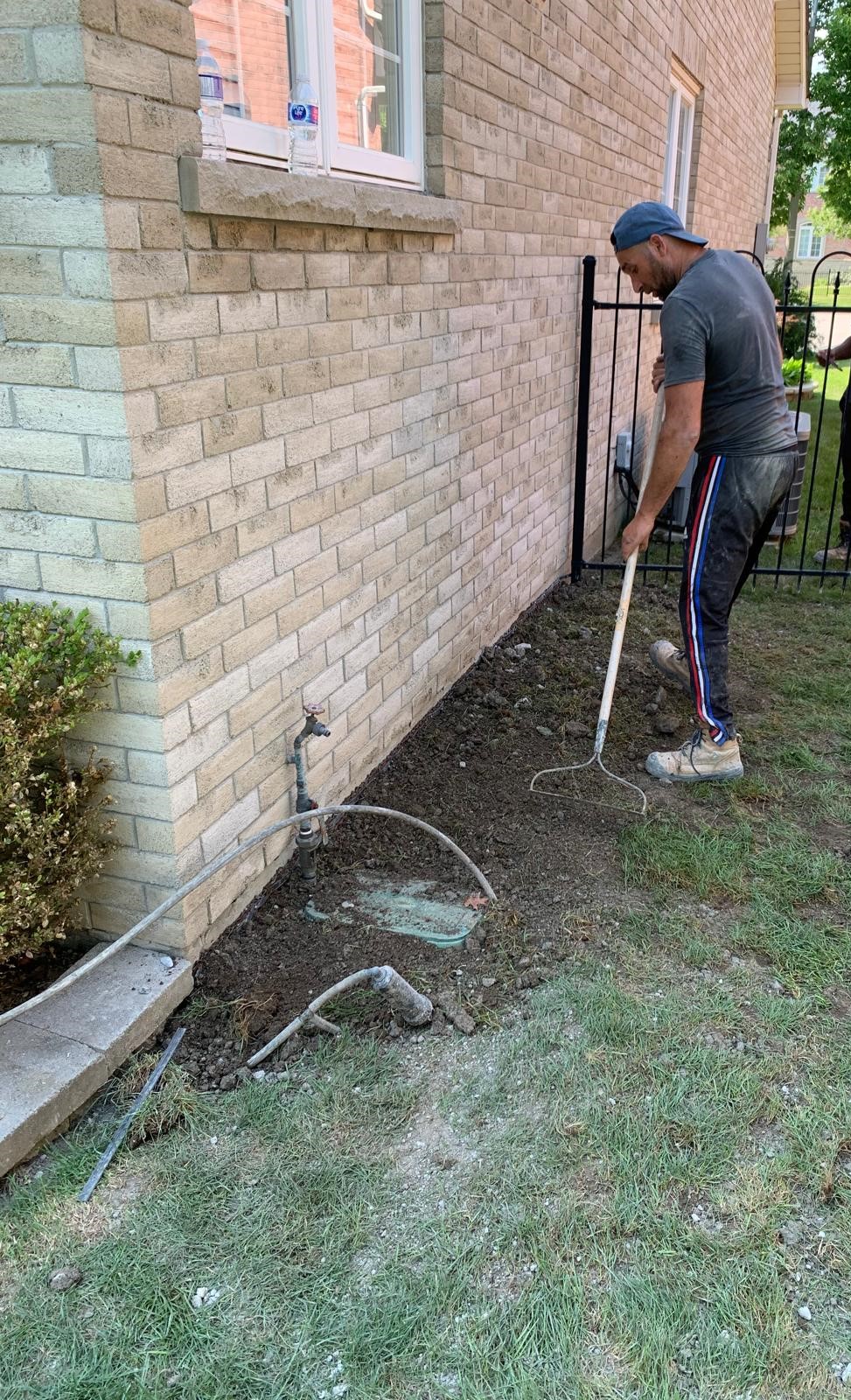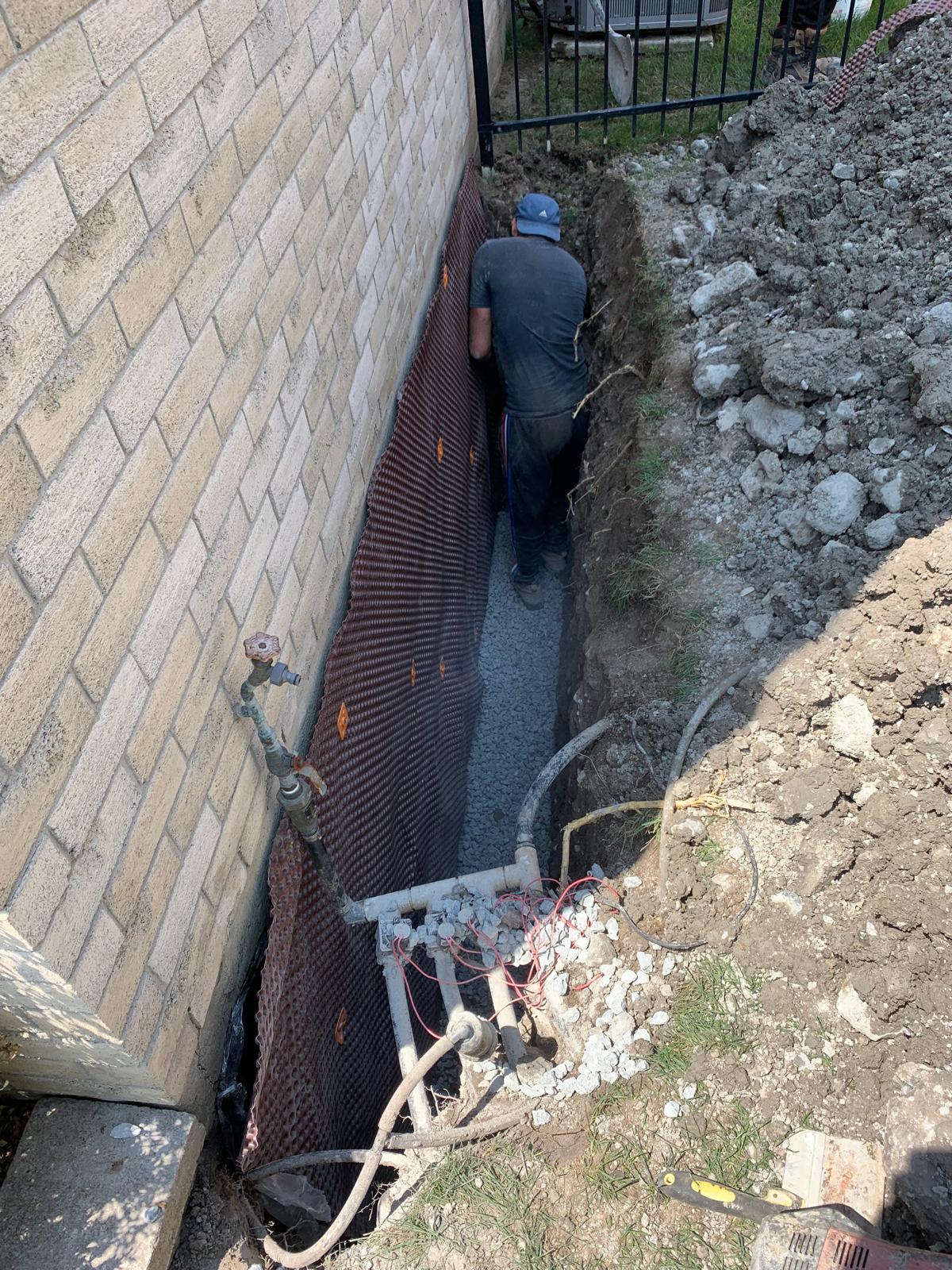28 Oct Comprehensive Guide to Basement Waterproofing Methods
Comprehensive Guide to Basement Waterproofing Methods
Ensuring your basement remains dry is crucial for maintaining the integrity and value of your home. Various waterproofing methods are available, each offering unique advantages and suitable applications depending on your specific needs. Here’s a detailed look at the most effective methods for basement waterproofing:
Exterior Waterproofing
Overview: Exterior waterproofing is a proactive approach that involves excavating the soil around your foundation to apply a waterproof membrane to the exterior walls.
Advantages:
- Highly effective in preventing water from entering your basement.
- Protects the foundation from external moisture and hydrostatic pressure.
Considerations:
- Can be costly and labor-intensive due to the excavation required.
- Typically requires professional installation.
2. Interior Waterproofing
Overview: Interior waterproofing methods focus on addressing water that has already entered the basement. Techniques include applying sealants and coatings to the inside walls and floors.
Advantages:
- More affordable and less disruptive compared to exterior waterproofing.
- Can be effective for minor to moderate water issues.
Considerations:
- Primarily addresses existing water problems rather than preventing water entry.
- May not be sufficient for severe water infiltration issues.
3. French Drains
Overview: A French drain system involves installing a perforated pipe surrounded by gravel along the perimeter of your foundation. This pipe collects and redirects water away from your basement.
Advantages:
- Reduces hydrostatic pressure by channeling water away from the foundation.
- Effective for managing groundwater around the basement.
Considerations:
- Installation can be complex and may require professional assistance.
- Regular maintenance is necessary to ensure the system remains functional.
4. Sump Pumps
Overview: A sump pump system collects water that accumulates in a sump pit and pumps it away from your home.
Advantages:
- Highly effective in managing water that has entered your basement.
- Provides a reliable solution for basements prone to flooding.
Considerations:
- Requires a power source, which means it may not be effective during power outages unless a backup system is in place.
- Regular maintenance is essential to ensure the pump remains operational.
5. Crack Injection
Overview: Crack injection involves sealing minor cracks in foundation walls using epoxy or polyurethane.
Advantages:
- Provides a targeted solution for small cracks that could allow water infiltration.
- Relatively quick and straightforward to apply.
Considerations:
- Best suited for minor cracks; larger structural issues may require more extensive repair.
- Effectiveness depends on proper application and the condition of the foundation.


Conclusion
Choosing the right basement waterproofing method depends on various factors, including the severity of the water problem, your budget, and the specific conditions of your home. Whether you opt for exterior waterproofing for comprehensive protection or interior methods for addressing existing issues, each technique offers unique benefits. Consulting with a professional waterproofing contractor can help you determine the most effective solution for your home, ensuring a dry and secure basement.





No Comments